Life is not like in the movies. We all know that, but it can be hard not to want to feel like one of those movie mommies who peeps in at her kids last thing at night, tugging a blanket over a shoulder, removing a book from the hands of a sleeping child. Real life isn’t like that. You tiptoe round the place, exhausted, avoiding the creaky steps on the stairs, trying not to step barefoot on Lego or a Matchbox car and don’t feel anything like Jennifer Aniston or whoever.
All that said, I did actually have something close to one of those movie mommy moments a few weeks ago. It was all because of a quilt. Back in August I set myself the goal of finishing a quilt I started years ago for Number Two. I flew through it and was bitten by the patchwork bug and made a quilt for Number Three too. To cut a long story short, I popped into Number Three’s room one night to admire the quilt kiss him goodnight. He was just dozing off. I absent-mindedly tucked the quilt up around his shoulders and he snuggled into my hand, saying “Danke Mama”. My heart melted. Total movie moment. A curly headed sleepy child mutters thanks to his mama as she tucks him in under a quilt she made especially for him.
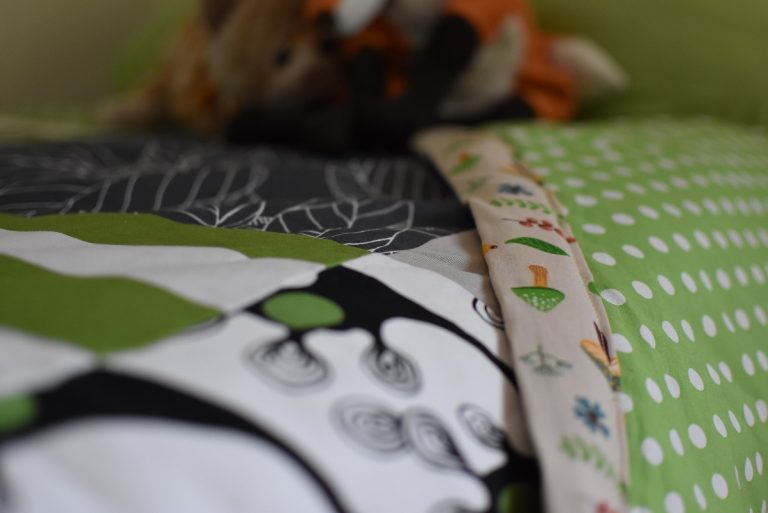
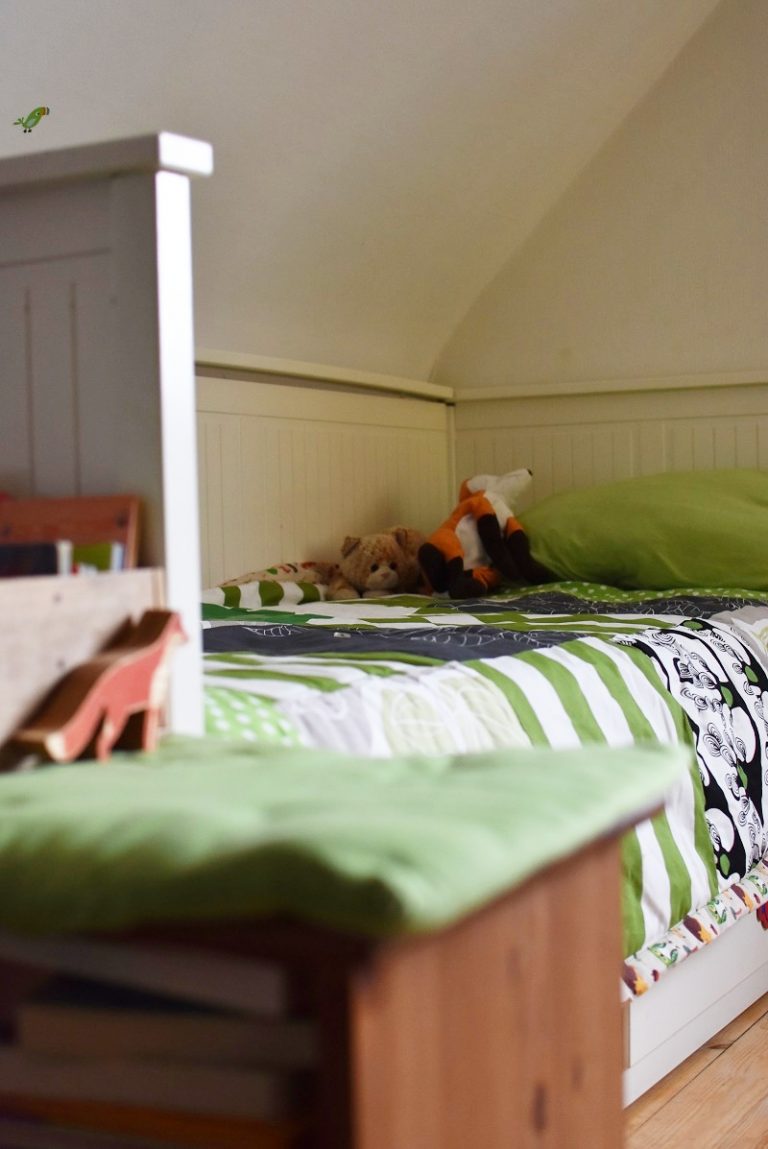
It was the best feeling, so obviously I want to share the secret to my success with you so you can have your very own feel-good movie moment. And on the off-chance that it doesn’t work, at least you’ll have a gorgeous testament to your sewing skills love for your child at the end of it all.
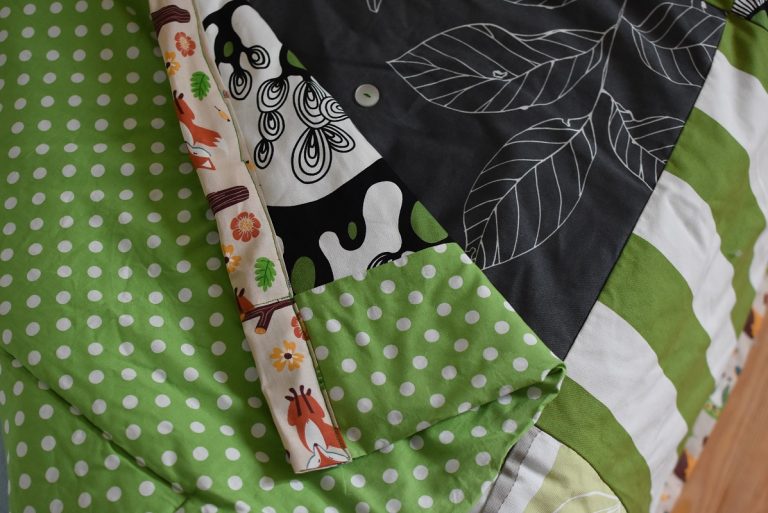
Equipment
So where do you start if you’ve never tried patchwork before? My advice would be not to stock up on all the equipment that you supposedly need for patchworking. Here’s what I used for my quilts in terms of equipment:
A sewing machine – mine is a Singer I bought in Aldi six or seven years ago. All I needed for these quilts were the plain and zig zag stitches.
A sharp scissors
A long ruler or tape measure
A large table
A clean floorspace for laying out the patches on
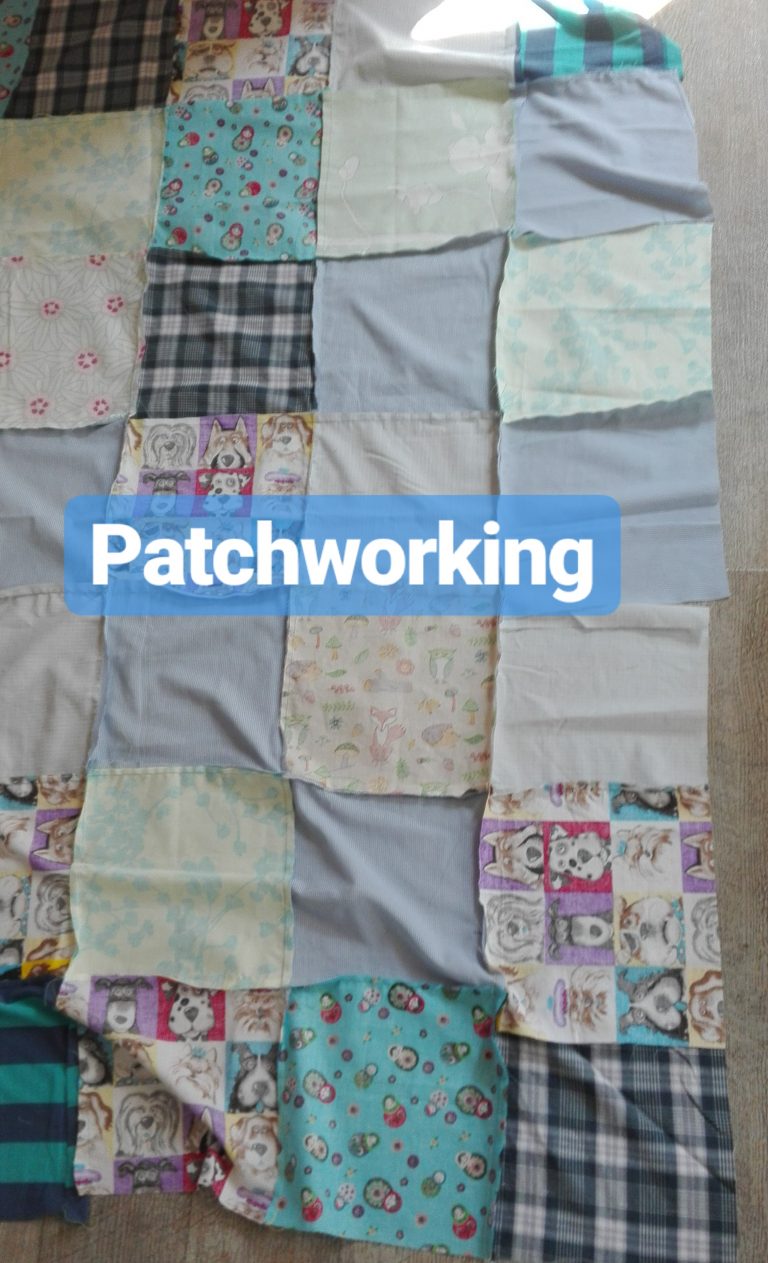
Choosing Fabrics
Picking out the fabrics you want can turn into a huge ordeal, if you are anything like me and could spend whole days looking at colours and patterns. My advice is to keep it simple, especially if you are trying patchwork for the first time. Choose fabrics that suit the colour scheme of the room you’ll be using the quilt in.
For one of my quilts I went for greens and greys, choosing a combination of spots, stripes and botanical/woodland patterns. In another quilt (pictured above) I used fabrics I already had, from old cotton shirts to old pillow cases to remnants of fabric from other projects. Each fabric had some kind of blue tone in it to pull the whole thing together.
For all the quilts I have made I have always chosen one large section of a single fabric for the backing. I used always use a plain fabric but after using the green and white spotty cotton backing on the quilt pictured here, I have ventured into the realm of patterned backing fabrics and I love the vibrant look it gives the finished quilt.
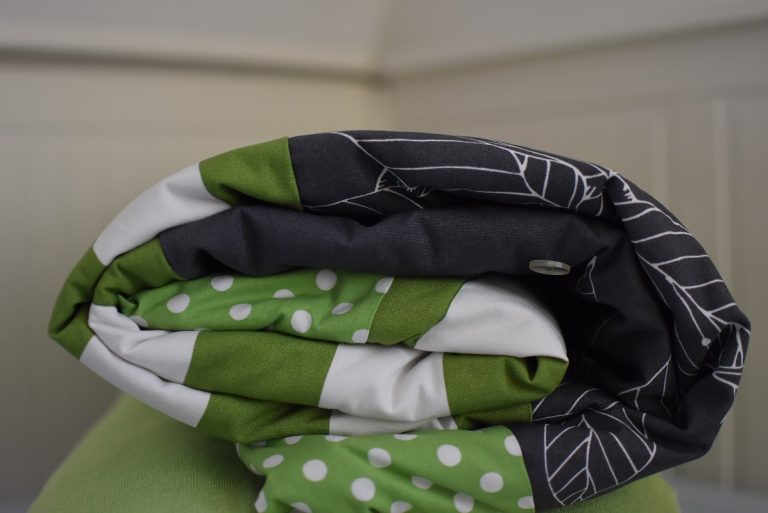
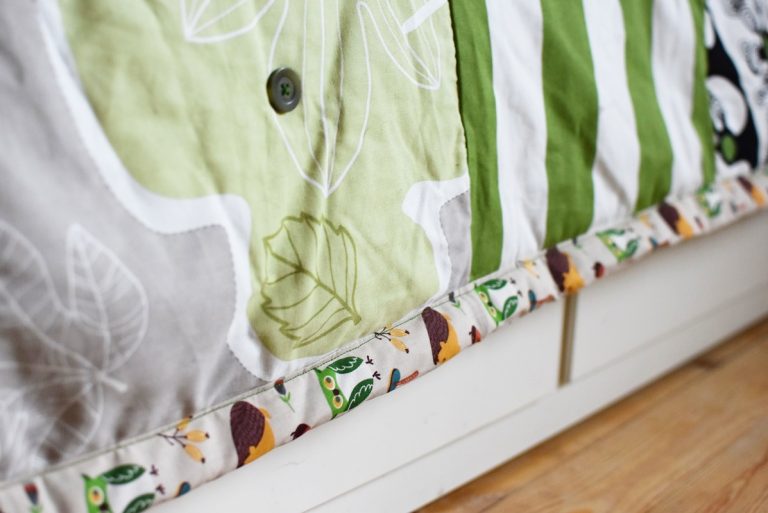
Filling
Good quality wadding for lining your quilt with is very important. This is the one part of the quilt I do not cut back on. It can be expensive, but you want your quilt to be snug and cosy and for the fabric to sit well. If you go to a good fabric shop, you should be able to get advice on which wadding will suit your project best. Remember too that depending on the functions your sewing machine has, you may not be able to sew through a very deep wadding material. I used wadding about 2cm deep.
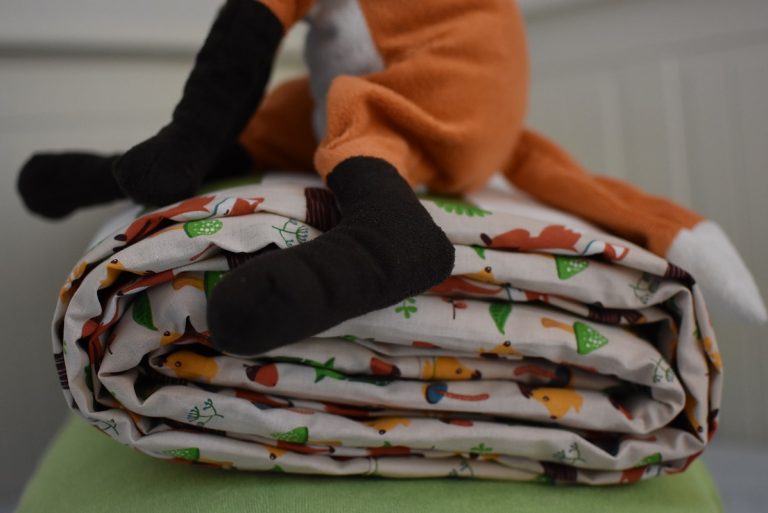
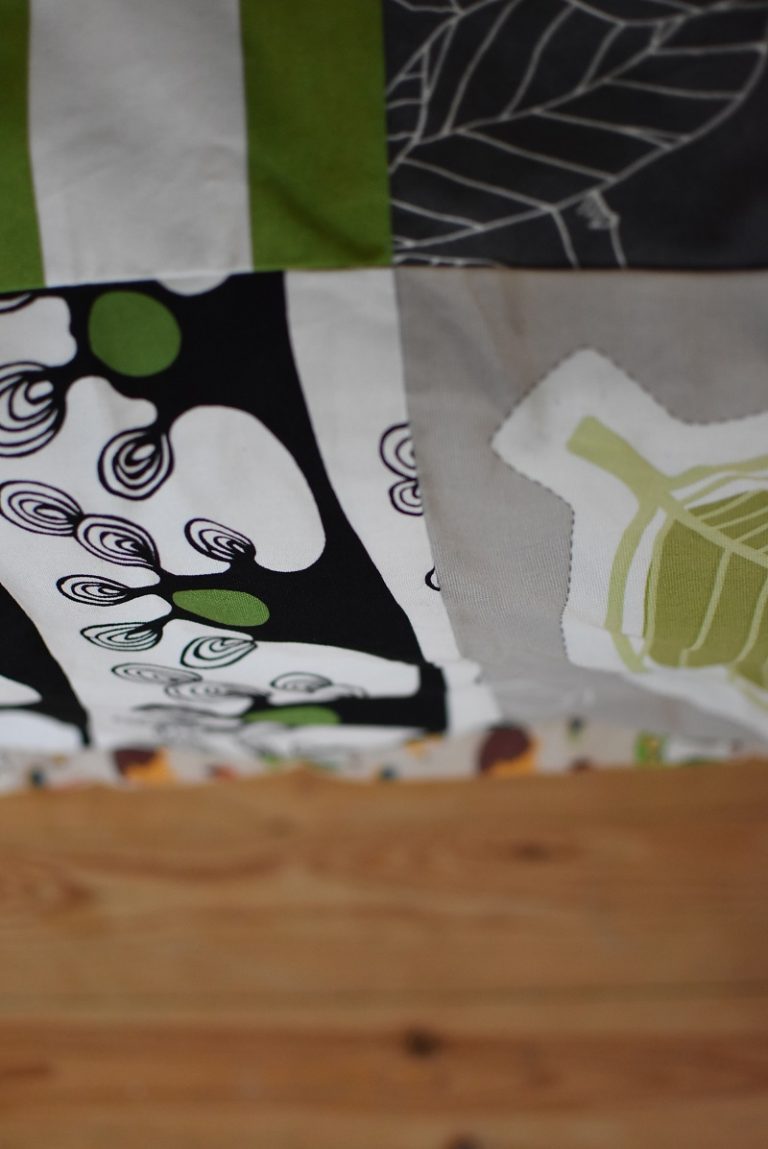
Pattern
When I started out making quilts, I aimed high and went straight to hexagons. I soon found that that was tough going. Squares and rectangles on the other hand are pretty foolproof and a much better choice for a beginner. I like them so much, I’ve stuck with them every since. For quick results, large squares or rectangles are best. A border of the backing marerial around the edge gives a really neat finish but isn’t a must. It all boils down to your own personal taste in colour and pattern.

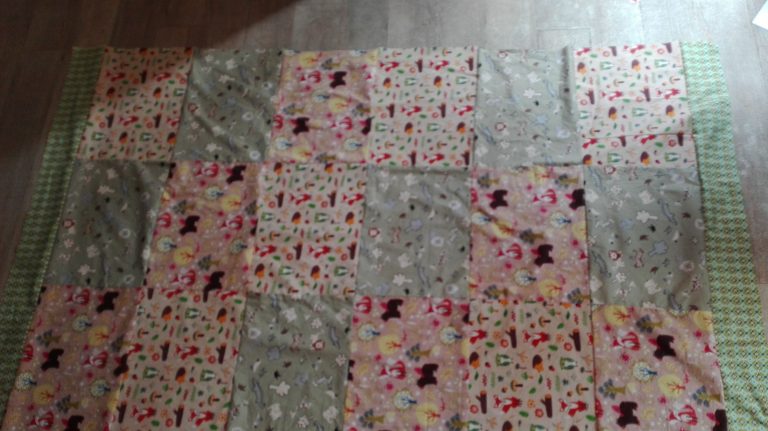
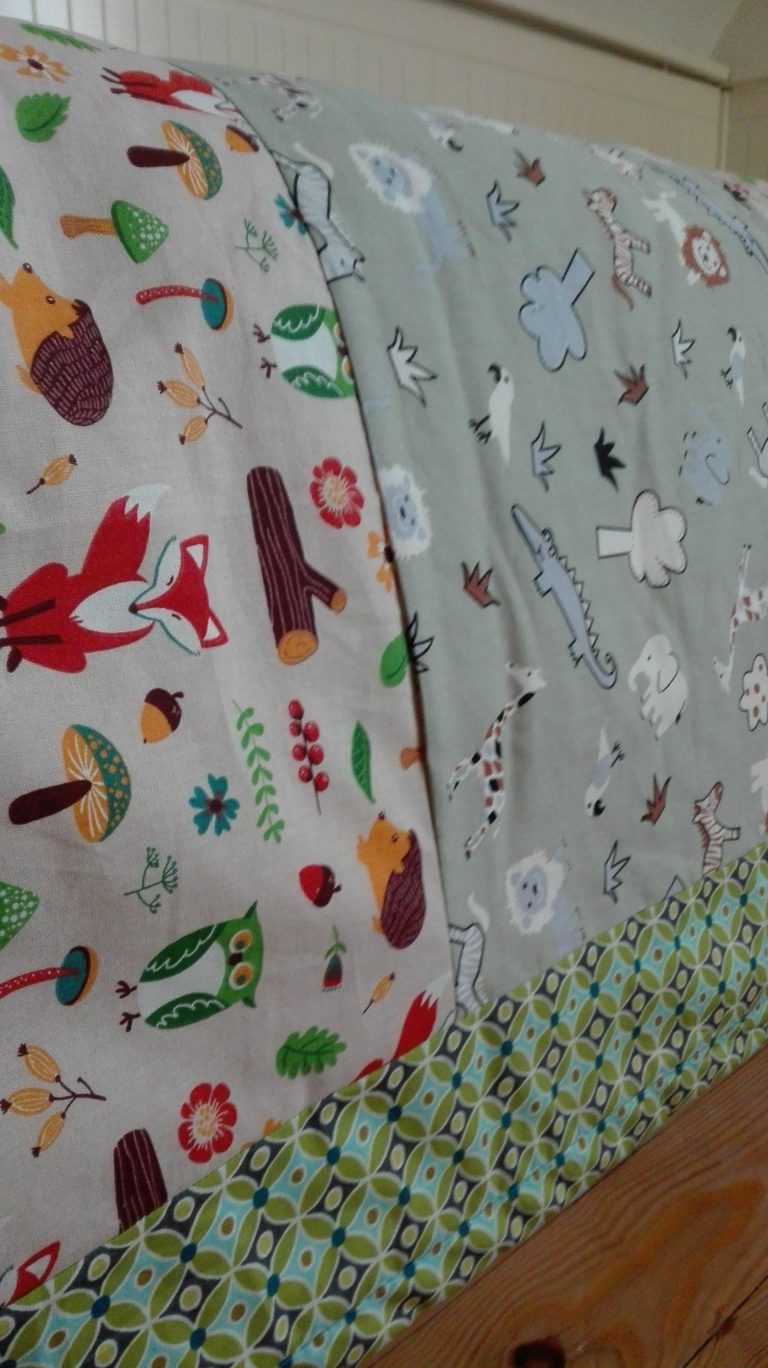
The Method
If you can cut and sew in straight lines, have an eye for pattern and are feeling brave, then I suggest you sit down and get to work. That’s my method. I’ve never used a pattern for my quilts. It is all spur of the moment decisions. With that come errors, I’ll admit, but when it comes to projects I am passionate about, I just have to get going on them, come what may.
If, however, you are more of a perfectionist or simply want to know the theory and the basics of quilt making before beginning to cut, get yourself along to a library or a book shop and get a good guide. It will be a great help, if you have the patience for it.
Personally I’m more of a trial and error person. Maybe that’s why I only got my movie mommy moment with my third and final child?
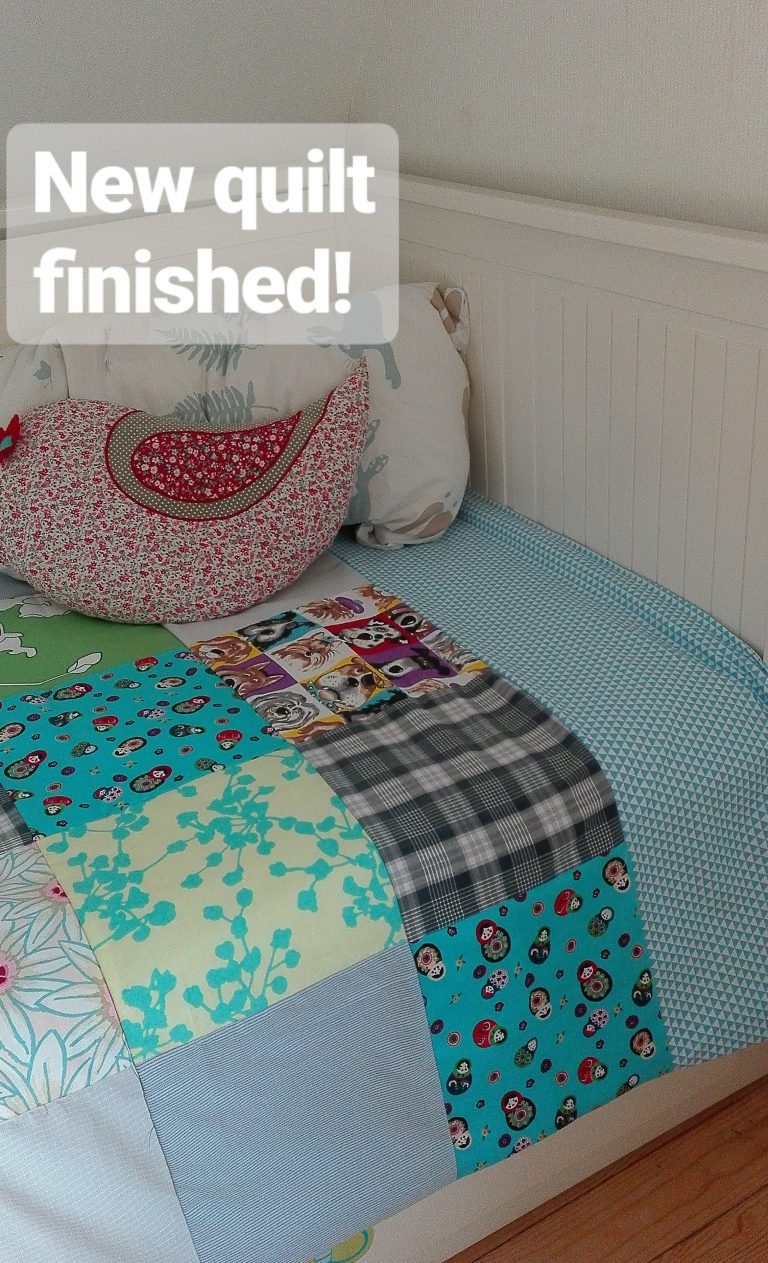
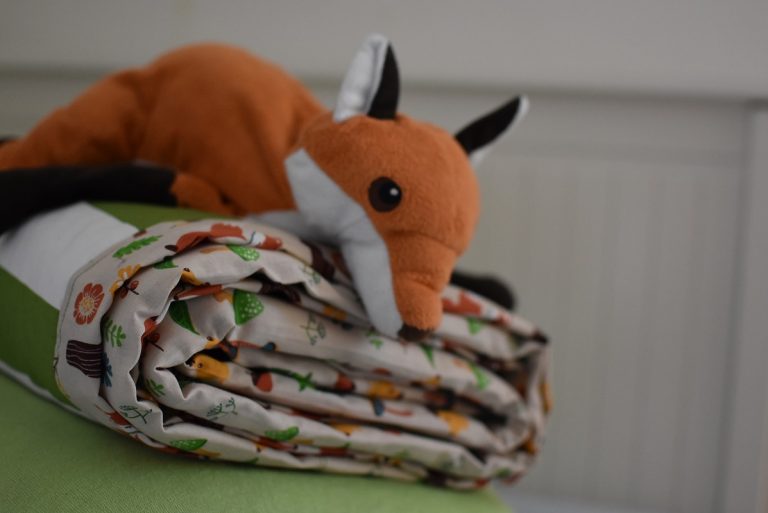

These are all beautiful. My mother in law has done a quilt for each grandchild and they are lovely. I wish I was good at sewing but I haven’t got a clue of how to use a sewing machine
#HomeEtc
You should give it a go Elena. It’s not as tricky as people imagine.
You’ve definitely inspired me to finish one of my projects!
Oh good. Do it!
What a beautiful story, it’s the little things isn’t it that can fill our hearts with joy. Love the wonderful quilting instructions too, I need to get better at these step by step tutorials X #HomeEtc
Thanks Lins. It was one of those moments I hope I’ll never forget. And I am so happy with the quilts too.